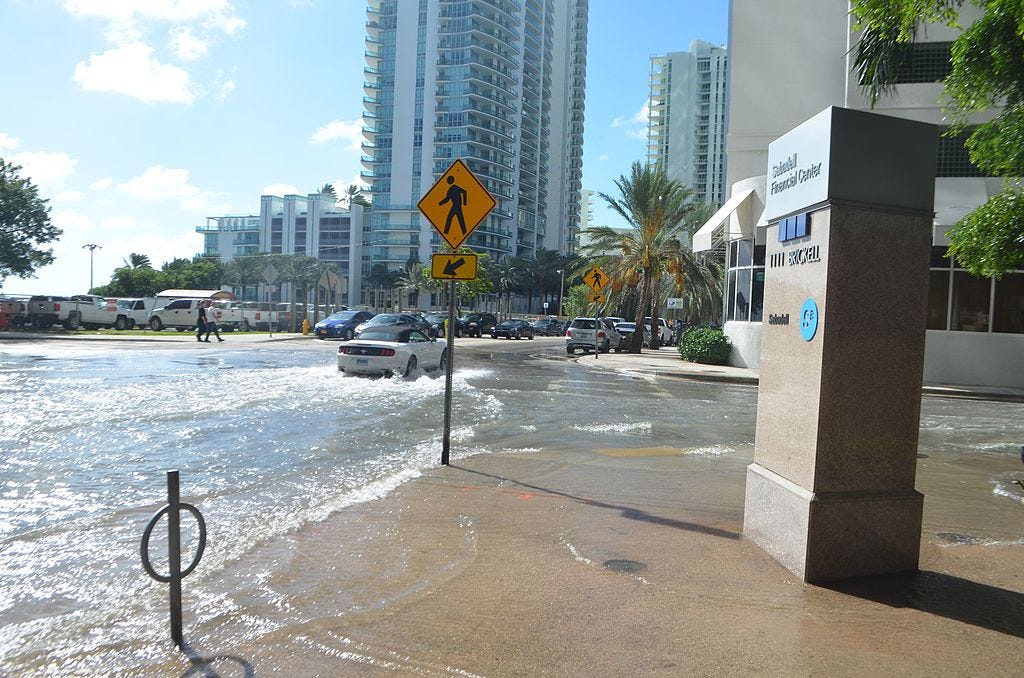ZEUS: Investing in climate migration
Pandemic moving patterns give a taste of the climate migration to come

(David Callaway is founder and Editor-in-Chief of Callaway Climate Insights. He is the former president of the World Editors Forum, Editor-in-Chief of USA Today and MarketWatch, and CEO of TheStreet Inc.)
SAN FRANCISCO (Callaway Climate Insights) — One of my neighbors went back to work in real estate this summer because the market just outside of San Francisco here in Marin County suddenly surged as the pandemic sent people fleeing the city. In New York City, housing rentals and purchases collapsed, while Long Island, Connecticut and New Jersey saw price spikes. Suddenly, open space is a priority.
The pandemic migration we’ve witnessed in the past six months illustrates just how quickly real estate trends and markets can change in the face of imminent danger. More than 40 million Americans move in just an average year, but the spike during Covid-19 has been extraordinary. As climate change begins to inflict more and more pain on coastal cities and heat-prone regions, the great migration will become a major investment theme.
Re-imagining of transit with electric trains, buses, and other vehicles. Micro-electricity grids to prevent massive blackouts. Complete infrastructure renewal of bridges, gas lines, transmission lines, sewage and water treatment plants. Affordable housing projects to offset soaring real estate prices. And a surge in the municipal bond market as massive amounts of money are raised to pay for all this.
Already, we’re seeing the beginnings. The Federal Emergency Management Agency (FEMA) last month allocated $500 million to helping cities relocate. States such as Louisiana, New Jersey, and California are looking to relocations, which may include forced removal of some entire neighborhoods.
As cities such as New York, Miami, Houston, and New Orleans become more vulnerable to the seas, speculation has centered on Midwestern and Southern alternatives. Duluth, Minn., Madison, Wis., Raleigh, N.C., Austin, Texas. Tucson, Ariz. Moving patterns now favor warmer locations, such as Texas or Arizona, but that can change as the warmer weather moves north.
Why is this column called Zeus? David Callaway explains here.
Same, of course, internationally. The government of Indonesia is already planning to move its capital city, Jakarta, which is projected to be almost completely submerged by 2050. Manila, Shanghai, Bangkok, Venice, and Melbourne, to name a few more, are also vulnerable.
It’s a global theme, but in many cases will be locally attacked. If pandemic moving patterns have taught us anything, it’s that people will move quickly to escape perceived danger, but they might not move that far.
One of the news companies I used to work at had operations in San Francisco and in Minneapolis, each with about 100 employees. Yet no one was willing to transfer. No one. People generally like where they live, and short of a job change, they will prefer to stay there as long as there are safe alternatives.
So successfully investing in the big migration play may take the form of local infrastructure projects, rather than grand city upheavals. Different neighborhoods will become more attractive, as we’ve already seen in Miami. Suburbs. Nearby urban centers. How those places position themselves in terms of affordable housing and quality of life will determine success.
In many cities in Europe, and older U.S. cities, there are areas known as the old cities; the original places where the settlers began building. But for many reasons they moved away to other nearby areas, better protected. Often these areas become tourist attractions, as they are no longer desirable places to live.
So investors looking for opportunities in this theme might look for plays like energy efficiency, clean concrete production, and electric vehicles; plays that improve upon existing cities and shifts in neighborhoods rather than speculate on complete upheaval and abandonment from the region.
The story of America is indeed the story of migration. West for opportunistic pioneers. North for blacks escaping the Jim Crow South. Florida, Texas and Arizona for retirees seeking a break from harsh winters. Climate change will dictate another mass migration, certainly. But this time it might be more tech-led. Infrastructure dictated. The themes are already starting to develop, and the pandemic offers clues.
After all, we can’t all move to Buffalo.


Some countries and cities won't have a choice. The Netherlands, for example, hasn't really anywhere to move to. Sea defenses and massive pumping stations will be deployed instead. That will mean a massive increase in demand for electricity to keep cities dry.